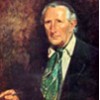Your shopping cart is empty!
Select currency
MENU

Terence Cuneo 1907-1996 CVO, OBE, RGI, FGRA
Terence Cuneo was the establishment artist for much of the latter half of the twentieth century. Painter of portraits, the Coronation of 1953, artist to industry, renowned for his works portraying mines, dams, industrial processes, but above all his railway scenes.
Terence Cuneo was born in London, the son of Cyrus and Nell Cuneo, artists who met while studying with Whistler in Paris. Terence Cuneo studied at the Chelsea Polytechnic from 1924 to 1927 before, like his father, working as an illustrator for magazines, books and periodicals. In 1936 Terence Cuneo started working in oils, continuing with his illustration work. During the war he worked for the War Artists Advisory Committee providing illustrations of aircraft factories and wartime events.
Following the war Terence Cuneo was commissioned to produce a series of railway posters; locomotive, track, locomotive works and bridges, the latter involved being lashed to the Forth Bridge in a gale. A significant point in his career was the commission to portray the Coronation in 1953, which brought his name before the public world-wide. He received more commissions from industry, which included the depiction of manufacturing, mineral extraction, road building, including the M1, and many portrait commissions; H.M. the Queen, and Field Marshal Montgomery.
Terence Cuneo painted over a wide range on his own account; big game in Africa, landscapes and his famous 'mouse paintings' a legacy of which being the inclusion of a small mouse in each of his paintings, his trademark. Further success was achieved in his regimental commissions, battle scenes and incidents as well as portraits but above all, it is Terence Cuneo's longstanding fascination with railways for which he is renowned.
His works can be found in museums in: London, H.M. the Queen Mother, Guildhall Art Gallery, H.M. the Queen and the Royal Institution.
There are no products to list.